The General’s Motor 1969 GAZ M-21 Volga
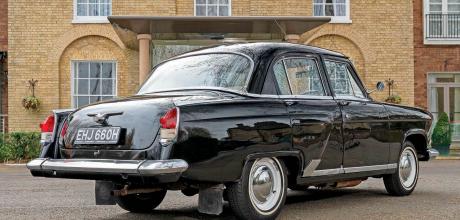
First owned by a general in the Bulgarian People’s Army, this Volga is now bringing some Cold War intrigue to the streets of Cambridge.
WORDS: ANDREW ROBERTS
PICTURES: MATT RICHARDSON
THE GENERAL’S MOTOR
A slice of Soviet bureaucracy, Kiril Vitanov’s Volga is arguably the most Communist entity in Cambridge since the spy ring.
Some cars inspire respect. A few that shall remain nameless inspire apathy, but a 1969 Volga has the power to evoke awe, especially when photographed in Cambridge. This was partially due to its associations with Cold War cinema, with shades of Funeral in Berlin, but the main reason is that theVolga M21really is a very imposing machine. The black paintwork, a fascia apparently borrowed from a B-film spacecraft and the Volga’s menacing stance all combine to create a genuinely memorable vehicle.
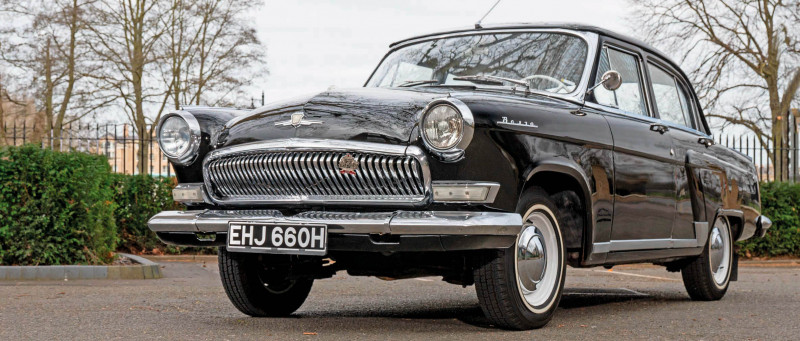
EHJ 660H is owned by Kiril Vitanov, who dreamed of owning an M21 ever since he was a child in Bulgaria in the 1980s. His father once told him: ‘A black Volga is a car for special people. It is the car of Yuri Gagarin, the first man in space.’ At that time, the traffic in Sofia consisted mainly of imports from the USSR – cars like the Moskvich 412, the VAZ-2101 (better known in the UK as the Lada) and the ZAZ Zaporozhets 968. From time to time you might also encounter Warszawas and Fiats from Poland, Wartburgs from East Germany and Škodas from Czechoslovakia, but seldom a Volga M21.
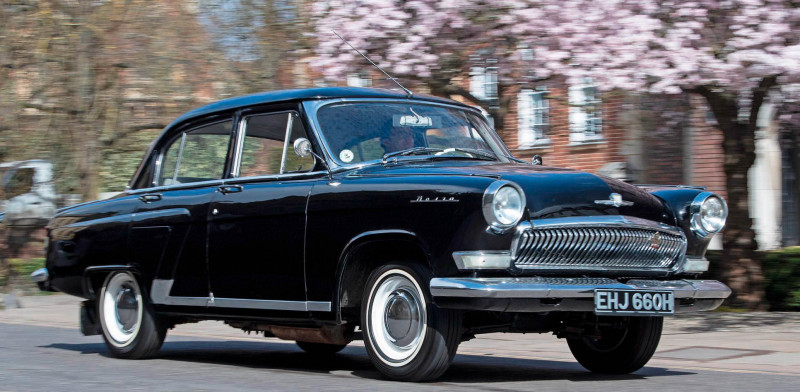
In the Soviet Union, the Volga was the car of choice for the police, middle-ranking party officials, the KGB – and taxi drivers. The M21 was also the largest car available to Soviet citizens because the GAZ13 Chaika and the ZIL limousines were built exclusively for the government. However, as the price was a vast 5400 rubles, a Volga was far beyond the means of the average comrade.
The M21 hailed from the GAZ (Gorkovsky Avtomobilniy Zavod, or Gorky Automobile Factory) plant in modern-day Nizhny. From 1946 onwards, the concern’s mainstay was the extremely robust Pobeda M20, but in 1953 the firm’s chief designer Alexander Mikhailovich Nevzorov commenced work on a radical successor. The new model sported quasi-American good looks that were faintly reminiscent of the Ford Customline – such bodywork reflected the Volga’s role of providing an alternative to the decadent products of Detroit.
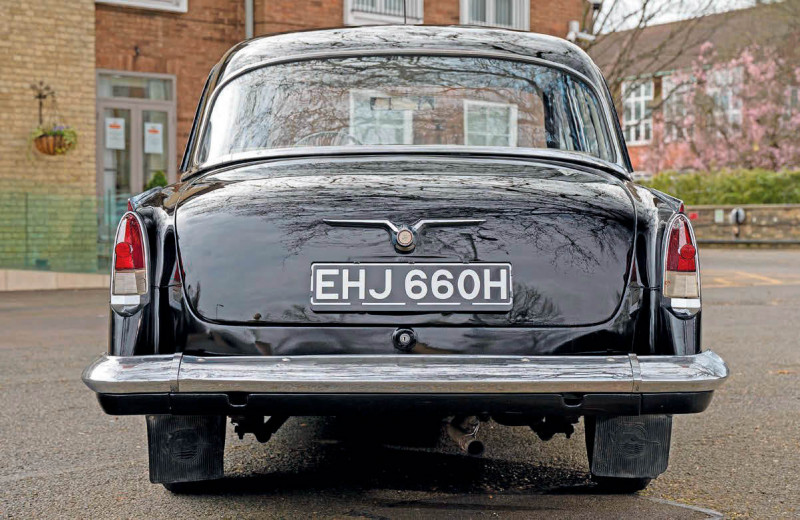
Power was initially from the M20’s sidevalve engine in 2432cc form, while GAZ carefully planned suspension to cope with highways and dirt tracks alike. The Volga’s 9in ground clearance was essential as roads were one of the least-used methods of transportation in the Soviet Union, and Tarmac surfaces were unusual outside larger towns. A motorist could also travel for literally hundreds of miles without encountering a garage, so the M21’s 35-piece toolkit was an essential fitting in case of a mechanical issue when travelling through the Ural mountains. The starting handle was equally important in case the engine proved reluctant to start in sub-zero temperatures.
In May of 1955, three Volgas, accompanied by several overseas competitors, took part in a heavily publicised test run from Moscow to the Crimea and back. It was an endurance trial of nearly 5300 miles over some of the most challenging highways in the USSR. The Soviet press gleefully reported the victory of the M21s over their bourgeois Western rivals, although it would have been somewhat surprising if this had not been the case. The writers took further pleasure in noting how a Standard Vanguard collapsed en route.
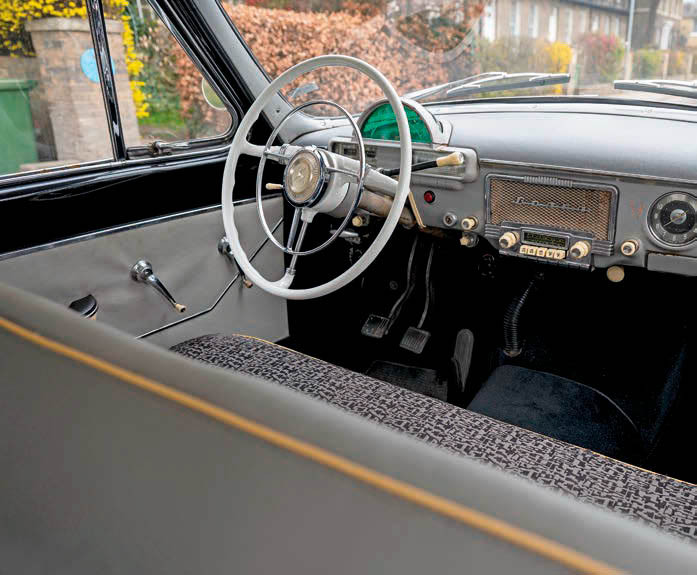
Full production commenced in October 1956, and GAZ updated the Volga as early as 1958. For this Series II there was a modified radiator grille and, more importantly, a new all-aluminium 2445cc four-cylinder OHV engine. 1962 saw the launch of the Series III, with a further change of frontal appearance, plus telescopic shock absorbers replacing the lever arm dampers. The third-generation model was also available as an appealing M22 Universal estate car, frequently used as an ambulance.
1962 further marked the launch of the M23, a KGB-only model powered by the Chaika’s 5.5-litre V8 engine. This highly exclusive Volga was codenamed Dogonyalka – The Chaser – and featured PAS (which was not available on the standard M21) and automatic transmission. There was also a special headlamp and tail lamp flashing system for sending coded messages, and a sinister internal control for the boot lock. However, many agents found the M23 utterly terrifying to drive as the steering possessed deviationist tendencies.
1968 saw the introduction of the square-rigged M24, and the manufacture of its predecessor ended on 15th July 1970 after 639,478 units had been built.
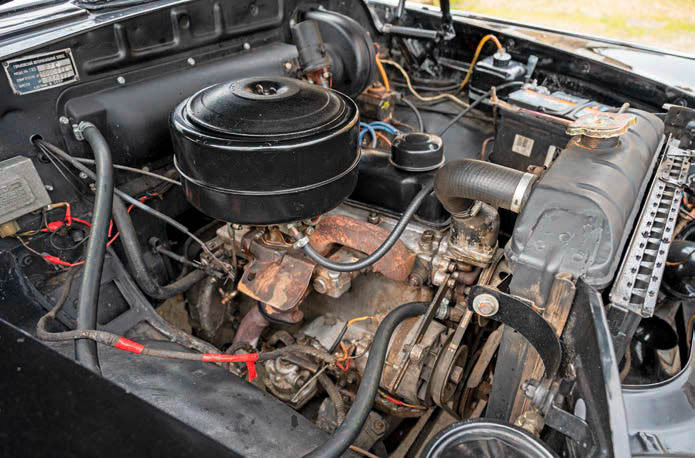
GAZ intended from the outset that the M21 would earn overseas currency, and exported a third of total production to 43 different countries. The multi-language brochure boasted that here was ‘a fully modern car in the best sense of the word with an elegant modern appearance.’
In the West, the Volga competed against the Renault Frégate, the Mercedes-Benz 190 Ponton, the Humber Hawk, the Fiat 1900 and the Peugeot 403. Some were employed by Greek cabbies, while Belgian-market models were locally assembled and available with Perkins or Land Rover diesel engines.
British imports commenced in 1959 when the M21 appeared at the London Motor Show alongside its smaller Moskvich compatriot. The ads proudly stated: ‘Volga do not subscribe to the idea of obsolescence,’ but sales were limited. Any large foreign car was an unusual sight in the UK of the early 1960s, but the concessionaire Thomson and Taylor also faced the challenge of promoting a Soviet product at the time of the Portland Spy Ring.
Yet the M21 had a good deal to offer the discerning motorist unconcerned at his/her neighbours reporting them to MI5 as a probable sleeper agent. £1113 4s 2d represented incredible value for a very well-built six-seater equipped with a radio, a volcanic heater and a reclining front bench seat as standard. Autocar stated: ‘Anyone who is of a mind to discount Russian design or workmanship would do well to think again,’ but the Great British public remained unconvinced.
By contrast, the Volga inevitably sold well to Comecon nations, and in Bulgaria it was much favoured by the government, ambulance departments and taxi drivers. Kiril remarks that in the 1960s, to aspire to M21 ownership meant joining the Communist Party, for this was a motor car ranking far above a locally-assembled Fiat 850 or Moskvich 408. The sight of such a vehicle on the streets of Sofia would almost certainly instil awe in the average resident.
Kiril obtained his first classic car in 2011 – a 1969 FSO Warszawa 223, which was the Polish-built version of the Pobeda. He was to own three more of these intriguing machines, but as one who once dreamed of becoming a cosmonaut, a Volga remained his ultimate goal. Four years later, he relocated to London where, despite his busy life, the quest for an M21 continued. ‘You can’t often find one for sale in good condition, even in my homeland,’ he said. ‘My mum acted as the project manager, and she ran almost everything with massive help from my friends in Bulgaria.’
Finally, in 2016, the right M21 was discovered. ‘It had been sitting under cover in a garage for the past five years. The paintwork was original, and the condition was stunning,’ Kiril recalled. EHJ 660H had covered just 14,000km from new, and was first registered in the town of Burgas. The Volga had actually been ordered in 1961, but there was an eight-year waiting list. This one was first owned by a military general who was obviously a party official, and Kiril has the original invoice from 1969.
It was a year before Kiril encountered his Volga in the metal, but it was worth the wait. ‘I saw the car for the first time in person in front of Sofia Airport,’ he told us. ‘My mum and a friend were waiting for my girlfriend and me, and around the car were lots of people taking pictures of it. It was a moment I’ll never forget.’
After the M21 had been shipped to the UK, Kiril’s first task was to re-fit the wiring and source an urgently required new fuel tank. One problem that did not afflict this Volga was corrosion. ‘They are made from very thick steel,’ said Kiril. ‘The brakes are often the M21’s main issue. However, they are easy to replace and source.’
In terms of spares availability, you can still find parts in Estonia, Latvia, Moldova, Lithuania, Belarus, Ukraine, Finland, Poland and Germany. Russia naturally has many Volga clubs, the largest being in Moscow and Saint Petersburg. The latter is also the home of the Official GAZ Shop, which has parts for virtually every former Soviet marque from UAZ to AZLK and others.
Few classic enthusiasts would undertake a 3590-mile round trip to purchase authentic interior fittings, but then the M21 is an extraordinary motor car, and in 2019 Kiril and his girlfriend decided to visit this fine establishment in person rather than have the items shipped to Cambridge. Kiril remarked: ‘The GAZ Shop has a few UK-based customers with Moskvichs, but I was the first with a Volga, and they were very excited about it.’ EHJ 660H now features a new carpet and vinyl upholstery, plus whitewall tyres for that additional touch of glamour. One somehow doubts that the original owner would have approved of the last-named modification.
Kiril finds the M21 more than lives up to his expectations when on the road, remarking that it is far lighter than its appearance would suggest, adding: ‘The Volga is a big car that weighs around two tons, but I find it easy. The massive tyres probably help, and although the steering is basic, the M21 was famous as one of the most comfortable Soviet cars of its era.’ Another surprising aspect of the Volga is the three-speed transmission with synchromesh on second and third – the steering column gear lever may look formidable, but the set-up is far more precise than the changes on several 1950s and 1960s British vehicles.
Above all, the Volga possesses an almost indefinable air of quality. It is easy to understand why many enthusiasts described it as the Soviet Mercedes, or a Volvo Amazon writ large. This is a highly dignified machine, and in 1962 The Motor referred to the M21 as ‘a very upper-middle-class car.’
The Volga’s paint finish reflected the first owner’s status, as black was a colour reserved for Bulgarian government officials and was not available to the public. A general of the Bulgarian People’s Army merited an M21 decorated with extra brightwork, but the overall ethos remains one of durability. Some cars seem to require written notice to start, while the Volga gives the impression of being ready under all circumstances. It also laughs in the face of potholes, for any car designed for USSR motoring of 56 years ago is undoubtedly more than capable of enduring the worst of British urban road surfaces. As for rural motoring, GAZ’s publicity accurately promised that lengthy out of town journeys in an M21 would be ‘joyous’ with ‘convenient seating accommodations.’
But perhaps the most charming aspect of the Volga is its detailing. The green Perspex speedometer is illuminated by sunlight. A hand throttle keeps the engine idling at traffic lights. A knob above the windshield manually controls the radio antennae. The cabin offers a vast amount of headroom, as this is a car built for hat-wearing government officials and security agents. The glove box hinges look like they could hold a barn door in place, while the elaborate wireless dial is incredibly fascinating. One half-expected to hear the chief announcer of Radio Moscow report on Leonid Brezhnev’s glorious visit to the Volgograd Tractor Plant instead of The Now Show. The last word must go to Kiril Vitanov, whose advice to anyone considering an M21 is: ‘Restoring a classic takes a lot of time, money and research. If you are not ready for it, a classic is not for you. However, people drive some specific type of car because they have an emotional connection with it. The feeling of driving a Volga is incomparable, and I recommend it if you want to drive something different in Britain today.’
Above all, the Volga possesses an almost indefinable air of quality. It is easy to understand why many enthusiasts described it as the Soviet Mercedes
Controls are labelled in Cyrillic-derived Russian script. Green Perspex cover lets light into the speedo.
TECHNICAL DATA 1969 GAZ M-21 Volga
- ENGINE: 2445cc S4 OHV
- MAX POWER: 80bhp @ 4000rpm
- MAX TORQUE: 129lb.ft. @ 3000rpm
- GEARS: 3-speed manual
- SUSPENSION: Front Independent coil springs and wishbones with anti-roll bar Rear Rigid axle with semi-elliptic springs
- BRAKES: Drums F/R
- TOP SPEED: 78mph
- 0-60mph: 25.9 seconds
- FUEL CONSUMPTION: 19mpg
- WEIGHT: 1626kg
- LENGTH: 4756mm
Everything about this car is over-engineered, including a 2.4-litre alloy OHV four-cylinder engine. The radiator blind is connected by a cable to a lever on the dashboard.
Anyone who is of a mind to discount Russian design or workmanship would do well to think again,’ but the Great British public remained unconvinced.
Controls are labelled in Cyrillic-derived Russian script. Green Perspex cover lets light into the speedo.


The next gen model was GAZ 24 Volga — the same peace of shit